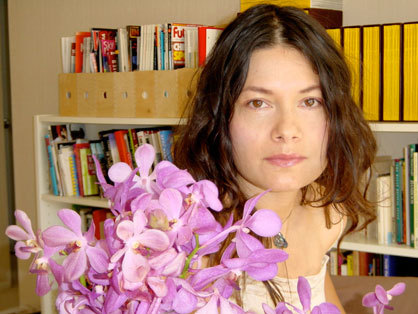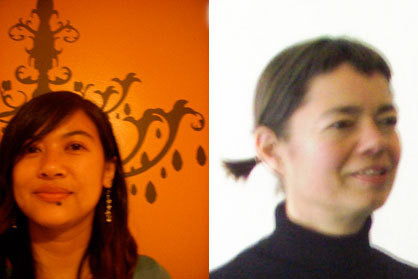Pedestal Placement: Design PR
Text by David Sokol
Washington, DC, United States
18.09.09
This column features public-relations agents who work with the design industries
Over the years, I’ve fielded queries from designers hunting for a public-relations agent: An architect has just completed a building that, after three years’ labor, she still finds fascinating; a product designer wants to discuss the materials research that went into a long-span table, and not just have it featured in a shopping round-up. These designers want to get the word out, but they don’t know how to navigate the media waters, nor the right person to do it for them. In response I’ve begun compiling a working list of PR pros. Actually, it’s a series of questionnaires in which these agents offer their thoughts about gauging the publication-worthiness of a designer’s work, the designer-client relationship, and the future of design publishing.
When The Unsung launched this autumn, a tagline promised profiles of designers who played key, but untrumpeted, roles at their respective businesses. Although many of the people featured below run their own ships, they performn one of the vital behind-the-scenes jobs this column is all about: validating the celebrity of some and, perhaps more important, boosting others’ rising sars. They are the unsung for the unsung. All assembled, this mini-series will provide a survey of the players in the business, and their insights about it. Look for it occasionally, as more agents add their two cents.
Name: Kenneth Caldwell
Location: San Francisco
Specialty: Communications consulting and writing for architects
Architects’ or designers’ biggest misperception of the media:
Fame. Very few architects will become famous. Indeed, as a percentage of architects, it is statistically irrelevant.
In deciding whether or not to seek publicity for a project, against what standard should an architect/designer gauge his or her work?
Is my work as good or better than what I see in the publication I want to be published in?
At what point should an architect/designer hire out PR?
If the architect cannot honestly assess the work, or when the architect cannot put the same level of care into his or her publicity that’s put into design work.
What makes a perfect client?
One who can listen and is genuinely kind.
How do you measure your success?
First, placement. And second, whether architects use that placement to connect with their constituencies.
Where is design publishing heading?
In a few directions simultaneously. Print media is going to be around for a while. Print wants more and more novelty. Online publishing is also going to grow. They want free content and photos. The pressure on print media to cut costs means that eventually they won’t pay for photo usage. Younger architectural photographers may be pressured into granting liberal copyright agreements to architects and by extension, to all kinds of publications.
Are architects/designers well equipped as communicators?
To be good communicators architects need to put themselves in the mindset of their client. What does the client want from this process or this result? If the architect truly understands this, he or she will probably be able to communicate just fine.
Could improved communication improve their designs?
Architects need to understand that it is part of their job to discuss their work and how it solves both general societal challenges and specific project challenges. To succeed the architect needs to be in constant communication with his or her constituencies. Defining the constituency is another question!
Name: Coralie Langston-Jones
Location: San Francisco
Specialty: PR for architects, industrial, graphic designers; home interiors
At what point should an architect/designer hire out PR?
Most designers leave PR outreach to the last minute, with little time to fully explore the story opportunities along the way. Not every project will be newsworthy. Whether or not to hire PR boils down to a designer’s intuition about a project—the uniqueness of it to grab people’s attention. It may often depend on a designer’s savvy about the client’s industry, the relevance of the project within that industry, and why the client is unique. If the project seems to have great relevance, then designers should hire a PR expert to help develop the story idea and create a relevant context and strategy for sharing the news. PR experts know all the short cuts and know where a story could get placed through their personal relationships with editors, freelance writers, bloggers, and electronic media producers. Intuition is a gift. Not every designer possesses it.
What makes a perfect client?
A perfect client is one who understands the media, knows the difference between self-puffery and a truly media-worthy story, and one who is open to working with the PR expert to maximize media exposure.
How do you measure your success?
When people say they’ve heard of my clients or they’ve seen them everywhere, and ultimately, when my clients refer me to potential new clients.
Where is design publishing heading?
In the last five to 10 years we’ve witnessed the emergence of the design blogosphere. What’s exciting about this phenomenon is its ability to create social communities instantly, and it gives young writers an opportunity to sharpen their skills in critical writing. That is where design blogs are strongest. What’s also notable in part of this trend is that many design bloggers tend to be designers first, and amateur writers second.
I sometimes wonder about short-form blog writing—whether or not it proves to be a source of new critical voices. Naturally, this type of writing is suited to reading stuff on screen, but perhaps the best critical writing and commentary still comes from print publications. More detailed, longer-form writing is more comfortably read in books and magazines, and more notable design critics can command bigger fees from print publications. There are a few exceptions, with notable critical writing from some design critics-bloggers such as Michael Beirut and Rick Poyner, but on the whole, my hunch is that design print publications will continue to be a source of new critical writing and blogs will continue to build social communities and open discussion forums. This could all change, of course, if the lure of money could bring in design critics we more often see in print.
Are architects/designers well equipped as communicators?
Architects are good at communicating to their own peers, but they are clueless about how to get the word out beyond their own industry, where their potential clients might exist. There are a few exceptions in the PR “naturals” who are thinking about PR right from the start, by, for example, ensuring that publicity clauses are written into their client’s contracts (on projects they intuitively feel there is a big PR opportunity). However, most architects and designers don’t think like journalists, and won’t be looking at overarching trends and how their projects might fit into them. They will usually try and promote their project as a standalone story without offering a specific context—just before the topping-off ceremony.
Name: Amery Calvelli
Location: Portland, Oregon
Specialty: Communication for design
In deciding whether or not to seek publicity for a project, against what standard should an architect/designer gauge his or her work?
The work or a particular project is something the designer would submit to competitions
At what point should an architect/designer hire out PR?
When the work makes them excited. They sense that the project will leave a distinctive mark on our future.
What makes a perfect client?
Trust, faith, and hope: trust built on the confidence of who they are and what their work represents; faith built through highly collaborative environments and teamwork; hope accumulated through a process that may redefine the expected and identify the yet unknown.
How do you measure your success?
It’s a process. Never stop.
Could designers’ improving their communication skills improve their designs?
There is a synergy between conveyance and meaningful design. The challenge, I think, is in determining the “What for?” That is, What is important to communicate and what inspires the design? If we chase better, more beautiful, and even sexy design, are we inadvertently fueling consumerism? Finding the value is no easy task.
Name: Haily Zaki
Location: Los Angeles
Specialty: Architecture and design
At what point should an architect/designer hire out PR?
It’s important for designers to have established a certain common design thread with their projects, whether designing a gas station or a luxury residence. It’s not the scale of a project, but the style and story behind it that will ultimately attract the media’s eye. Writers and editors need to be able to see who a designer is through his or her work, and that only comes with realizing a certain critical mass of work.
What makes a perfect client?
Patience, trust, and daring.
How do you measure your success?
As long as my client is happy, I’m happy.
Where is design publishing heading?
I don’t think blogs or online media outlets will ever completely replace books and magazines in fields as visually compelling as design and architecture. With more groundbreaking design and fewer outlets, the competition to get projects published will just become more fierce. But that’s probably healthy. Competition breeds excellence, right?
Are architects/designers well equipped as communicators?
It all depends. Yes, because only the designer can describe the intent of a particular design with complete authenticity. And no, because sometimes the closer one is to a design, the more difficult it is to communicate it to someone who might not be as intimately involved. Then there’s that immeasurable quotient—personality.





